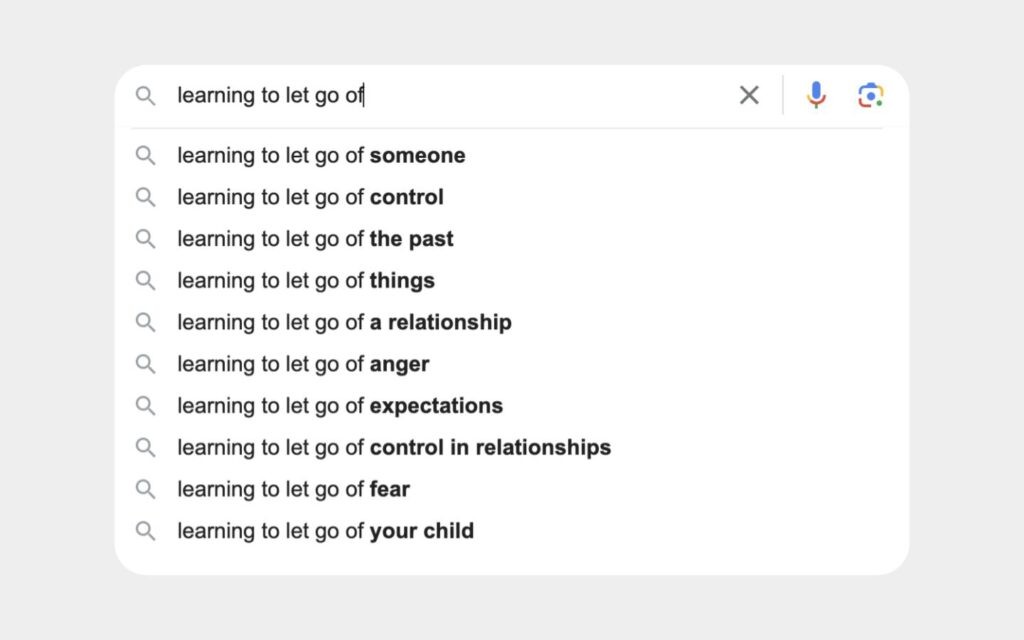Letting go, whether it’s a past relationship, a failed project, or a limiting belief, is a universal human challenge. Holding on to negativity, regret, and outdated goals can weigh us down, hindering personal growth and happiness. But How Do You Learn To Let Go and move forward? This article explores five practical exercises to help you release what no longer serves you and embrace a lighter, freer life.
 Letting go of things
Letting go of things
1. Letting Go of Physical Clutter: Decluttering Your Mind and Space
Letting go often begins with the tangible. Why do we cling to physical possessions? Sometimes it’s sentimental value, associating objects with cherished memories or unrealized dreams. Other times, it’s fear of waste or the sunk cost fallacy, feeling obligated to keep something because we invested in it.
Start decluttering progressively. Begin with easy items like unused gadgets or old papers. Then, gradually tackle more sentimental objects, asking yourself, “Why do I care about this item?” Often, you’ll find the underlying need can be met in other ways, like journaling about the associated memory. Remember, a tidy home is less important than a home that feels comfortable and truly yours.
2. Letting Go of Outdated Goals: Embracing Flexibility and Serendipity
Old goals can become invisible burdens. They linger in our subconscious, influencing decisions even when they no longer align with our aspirations. We cling to them out of obligation to our past selves or societal pressures. These outdated goals can stifle learning and serendipitous discoveries.
To release these goals, write down your current objectives and ask yourself, “Why do I care about this goal?” Transform rigid goals into flexible systems focused on enjoying the process. Learning, recognition, and helping others can be achieved through consistent effort and meaningful connections, rather than chasing arbitrary milestones.
3. Letting Go of Control: Finding Freedom in Flexibility
Our attempts to control our environment, from micromanaging to rigid routines, often stem from a desire for stability. However, this can limit spontaneity and growth. Recognizing these patterns in ourselves is crucial. Parents often face this challenge as their children grow, learning to grant them autonomy.
To let go of control, give control to gain control. Replace rigid rules with flexible principles. For example, “Finish homework before play” becomes “Prioritize tasks but make time for fun.” This fosters adaptability, allowing you to thrive amidst uncertainty.
4. Letting Go of Relationships: Making Space for Healthy Connections
Sometimes, letting go of relationships, even long-standing ones, is necessary for personal growth. Relationships evolve, and some may no longer reflect who we are today.
Ask yourself, “Why do I care about this relationship?” Writing a letter to the person (without sending it) can be helpful. Express gratitude, acknowledge the emotions, and practice forgiveness. This process may even reaffirm the relationship’s value. If not, let go gracefully, cherishing the lessons learned.
5. Letting Go of the Past: Healing and Moving Forward
Our brains are wired to remember painful experiences vividly. While this serves as a survival mechanism, dwelling on past hurts can hinder emotional well-being. Letting go of the past requires reinventing our identity, separating ourselves from past narratives.
Ask yourself, “Why do I care about this memory?” Understanding the underlying reasons allows for healing. Journaling about lessons learned or focusing on positive experiences can help replace negative memories with generative thoughts and a healthier self-image.
Conclusion: The Power of Letting Go
Letting go is a continuous practice, requiring courage and self-awareness. By asking yourself “Why do I care?” in relation to possessions, goals, control, relationships, and memories, you can begin to loosen your grip on what no longer serves you. Embracing the art of letting go allows for personal growth, resilience, and a life filled with greater freedom and joy. Remember the wise words of Eppie Lederer: “There are times when it takes much more strength to know when to let go and then do it.”